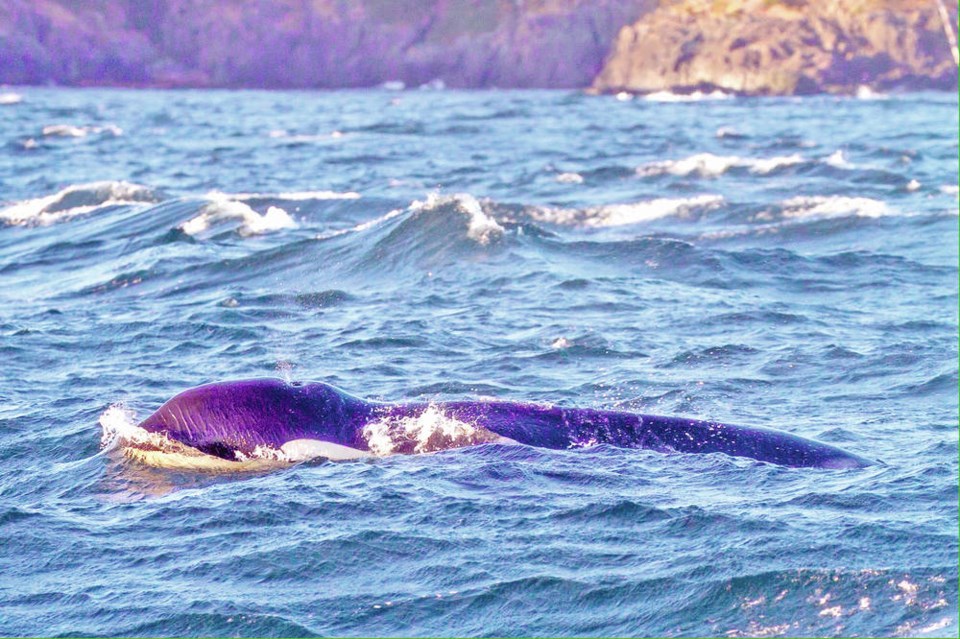Dozens of boats were out in Juan de Fuca Strait on Friday hoping to find K-21, the 35-year-old southern resident killer whale who was reported to be close to dying.
Paul Cottrell of the Department of Fisheries and Oceans Marine Mammal Unit said the orca named Cappuccino is presumed dead from as yet undetermined causes, which could include starvation or a chronic disease such as cancer — or both.
The DFO is hoping to find K21’s body to perform a necropsy, he said.
K21 was spotted Wednesday near Race Rocks with a collapsed dorsal fin, emaciated body and shrunken head and neck area known as “peanut head,” a sign the whale is near death.
It put a damper on a celebrated gathering of the southern resident pods J, K and L in the Salish Sea this week after long absences, including J-Pod, which hadn’t been seen in 108 days.
The southern residents are an endangered species with only 75 remaining. Their continued existence has been under threat because their main food source, chinook salmon, has been scarce.
“It’s a sad situation and very hard to lose one,” said Cottrell on Friday afternoon. “At this point, we don’t know where he is or if he’s alive. We haven’t been able to determine the cause [of his condition]. It could be the lack of food, but it could be chronic disease. They get a lot of the chronic diseases human do, like cancer.”
K21’s age may be a factor, as 35 is considered old for a male. Females live longer.
The last southern resident orca to show “peanut head” symptoms was J50, a four-year-old female known as Scarlet, who died in 2018 despite unprecedented attempts by scientists to feed and inject the animal with antibiotics. A necropsy was never done on that animal, so it isn’t known if lack of food or a disease caused her death, said Cottrell.
K21 is the last survivor of K-pod’s four matrilines, a societal system where all the whales are descended from their mother’s line. They tend to stick together. K-pod is the smallest of the southern resident clans.
Researchers say K21 had recently been “adopted” by adult female K-16, Opus, and they would travel together.
Cottrell said the research and whale watch community is out in force with “lots of eyes out there trying to find him.”
The southern resident killer whales who returned to their traditional summer feeding grounds in the Salish Sea on Tuesday and Wednesday have since left.
Researchers say it’s a sign that chinook salmon, their main food source, is scarce and they’ve gone elsewhere to look for food.
The other members of J-, K- and L-Pods all appeared to be healthy.
At least two of the three calves born to J-Pod over the last two years were confirmed.
Meanwhile, DFO scientists were on the water on the Esperanza Inlet attempting to free a grey whale entangled with fish gear. Most of the gill netting was removed and the DFO was able to tag the whale to keep track of it so they can remove the rest when it comes closer to land. The big grey had moved out to open water and teams are on standby in Tahsis.



